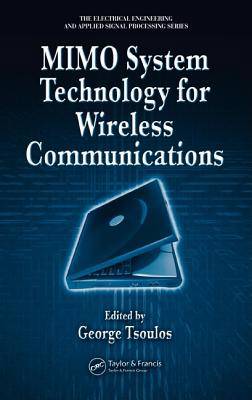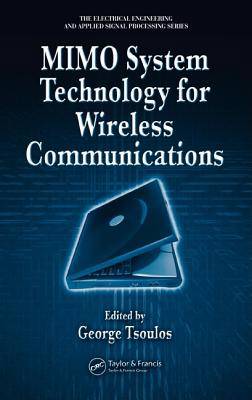
- Afhalen na 1 uur in een winkel met voorraad
- Gratis thuislevering in België vanaf € 30
- Ruim aanbod met 7 miljoen producten
- Afhalen na 1 uur in een winkel met voorraad
- Gratis thuislevering in België vanaf € 30
- Ruim aanbod met 7 miljoen producten
Zoeken
Mimo System Technology for Wireless Communications
€ 175,95
+ 351 punten
Omschrijving
For broadband communications, it was frequency division multiplexing. For optical communications, it was wavelength division multiplexing. Then, for all types of networks it was code division. Breakthroughs in transmission speed were made possible by these developments, heralding next-generation networks of increasing capability in each case. The basic idea is the same: more channels equals higher throughput. For wireless communications, it is space-time coding using multiple-input-multiple-output (MIMO) technology. Providing a complete treatment of MIMO under a single cover, MIMO System Technology for Wireless Communications assembles coverage on all aspects of MIMO technology along with up-to-date information on key related issues. Contributors from leading academic and industrial institutions around the world share their expertise and lend the book a global perspective. They lead you gradually from basic to more advanced concepts, from propagation modeling and performance analysis to space-time codes, various systems, implementation options and limitations, practical system development considerations, field trials, and network planning issues. Linking theoretical analysis to practical issues, the book does not limit itself to any specific standardization or research/industrial initiatives. MIMO is the catalyst for the next revolution in wireless systems, and MIMO System Technology for Wireless Communications lays a thorough and complete foundation on which to build the next and future generations of wireless networks.
Specificaties
Betrokkenen
- Uitgeverij:
Inhoud
- Aantal bladzijden:
- 394
- Taal:
- Engels
- Reeks:
Eigenschappen
- Productcode (EAN):
- 9780849341908
- Verschijningsdatum:
- 28/03/2006
- Uitvoering:
- Hardcover
- Formaat:
- Ongenaaid / garenloos gebonden
- Afmetingen:
- 162 mm x 236 mm
- Gewicht:
- 666 g

Alleen bij Standaard Boekhandel
+ 351 punten op je klantenkaart van Standaard Boekhandel
Beoordelingen
We publiceren alleen reviews die voldoen aan de voorwaarden voor reviews. Bekijk onze voorwaarden voor reviews.










